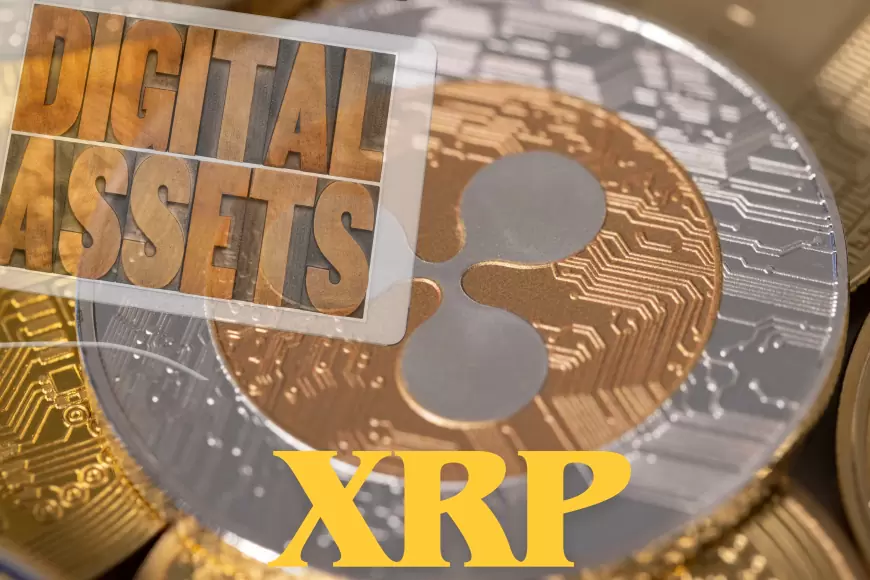Mastering XRP: A Guide to Understanding and Utilizing Ripple's Digital Asset
Discover the exciting world of XRP and how it can potentially revolutionize the global financial system. Gain understanding of its role as a bridge currency and explore potential use cases for this digital asset. Stay informed and make informed decisions when it comes to XRP.

Introduction to XRP
XRP is a digital asset that runs on the XRP Ledger, an open-source and decentralized blockchain technology. It was created by Ripple Labs in 2012 and has gained popularity as a cryptocurrency for international transactions. XRP is known for its speed, scalability, and low transaction fees, making it an attractive option for financial institutions and individual users alike.
History and Development of XRP
XRP was launched in 2012 as a digital asset for the Ripple payment protocol. It was initially called "OpenCoin" and later changed to "Ripple Labs". The company behind XRP, Ripple Labs, aimed to create a faster and more efficient way to transfer money globally. In 2013, it became one of the top five cryptocurrencies in terms of market capitalization.
In 2018, Ripple Labs created a separate entity called Xpring to focus on developing the XRP Ledger and supporting its ecosystem. As of 2020, XRP is the fourth-largest cryptocurrency by market capitalization.
How Does XRP Work?
As a bridge currency for international payments, XRP. When a user wants to make an international transaction, they can use XRP as an intermediary currency to convert their local currency into the recipient's currency. This process is much faster and cheaper compared to traditional payment methods.
The XRP Ledger uses a consensus algorithm called "XRP Ledger Consensus Protocol" (XRPLCP) to validate transactions. It does not rely on mining like other cryptocurrencies, which makes it more energy-efficient and cost-effective.
Benefits of Using XRP
- Speed: XRP transactions are processed within seconds, making it one of the fastest digital assets in the market.
- Cost-efficient: The transaction fees for using XRP are significantly lower compared to traditional payment methods such as wire transfers or credit card payments.
- Scalability: The XRP Ledger can handle a high volume of transactions, making it a suitable option for large financial institutions and businesses.
- Decentralization: XRP is decentralized, meaning it is not controlled by any central authority, making it less susceptible to manipulation or censorship.
- Global Reach: XRP's use as a bridge currency allows for seamless international transactions without the need for additional conversions or fees.
The Future of XRP
XRP has gained widespread adoption in the financial sector, with many banks and payment providers incorporating it into their systems. Its speed and cost-effectiveness have made it a preferred choice for international payments. As more institutions and businesses join the ecosystem, the demand for XRP is expected to increase.
Ripple Labs continues to work on improving the XRP Ledger, with plans to introduce new features such as smart contracts and decentralized applications (dApps). These developments could further enhance the use cases for XRP and potentially increase its value.
XRP as a Bridge Currency
XRP's main function is to serve as a bridge currency for cross-border payments. This means that it acts as an intermediary between two different currencies, allowing for seamless and fast transactions. Traditional international transactions often involve multiple currency conversions, resulting in longer processing times and higher fees. With XRP, the need for these conversions is eliminated, making it a more efficient and cost-effective option for international payments.
XRP's Role in Ripple's Payment Network
RippleNet is a global payment network that uses XRP as its underlying digital asset. This network allows financial institutions and businesses to transfer funds internationally using XRP as the bridge currency. By integrating with RippleNet, these entities can access faster and cheaper international payments, ultimately improving their bottom line. XRP's role in this network highlights its potential as a game-changing digital asset for the global financial industry.
Regulatory Clarity and Adoption
As with any new technology or financial instrument, regulatory clarity is crucial for widespread adoption. Ripple Labs has been actively working with regulators around the world to ensure compliance and create a favorable regulatory environment for XRP. This effort has resulted in partnerships with various financial institutions and businesses, further increasing the use and demand for XRP.
Potential Use Cases for XRP
Aside from its main function as a bridge currency, XRP has potential use cases in other industries. For example, it can facilitate micropayments, making it suitable for online content creators who want to monetize their work. It can also be used in the gaming industry, where fast and cost-effective transactions are essential. As technology continues to evolve, we may see more use cases for XRP emerge.
Challenges
Despite its potential, XRP still faces challenges and criticisms. Some argue that it is not truly decentralized since a significant portion of its supply is controlled by the company behind it, Ripple Labs. Others question its use as a bridge currency when traditional systems like SWIFT are still dominant in international payments. Additionally, regulatory uncertainty and competition from other digital assets may also impact XRP's growth.
Stay Informed for a Bright Future
As we can see, there are many factors at play when it comes to the success and growth of XRP. It is an exciting time for this digital asset, with potential for significant impact on the global financial system. By staying informed and keeping up with the latest developments, we can better understand XRP's role in the world of cryptocurrencies and potentially benefit from its growth in the future. Let's continue to explore and learn more about this fascinating digital asset. Happy trading!
Frequently Asked Questions (FAQ)
Q: Is XRP a cryptocurrency?
A: Yes, XRP is a digital asset that runs on the XRP Ledger.
Q: How is XRP different from other cryptocurrencies?
A: XRP uses a different consensus algorithm and has a specific purpose as a bridge currency for international transactions.
Q: Can anyone mine XRP?
A: No, XRP is not mined like other cryptocurrencies. New coins are released periodically by the company behind it, Ripple Labs.
Q: Can I use XRP to buy goods and services?
A: Some businesses may accept XRP as a form of payment, but its main use is for cross-border transactions.
Conclusion
XRP has established itself as a prominent player in the world of cryptocurrencies, with its speed, low fees and global reach making it an attractive option for international transactions. Its development and adoption by financial institutions and businesses suggest a promising future for this digital asset. As the world becomes more interconnected, XRP's role as a bridge currency could become even more essential in facilitating seamless cross-border transactions. So, it is definitely worth keeping an eye on for investors and individuals looking for a fast and cost-effective way to move money globally. So, if you haven't already, consider adding XRP to your cryptocurrency portfolio. Keep in mind that the cryptocurrency market is highly volatile, so do your own research and invest wisely. Happy trading!
Note: Nothing in this article should be interpreted as financial advice; it is simply meant to be informative. Always do your own research before investing in any digital asset or cryptocurrency.
What's Your Reaction?





















































